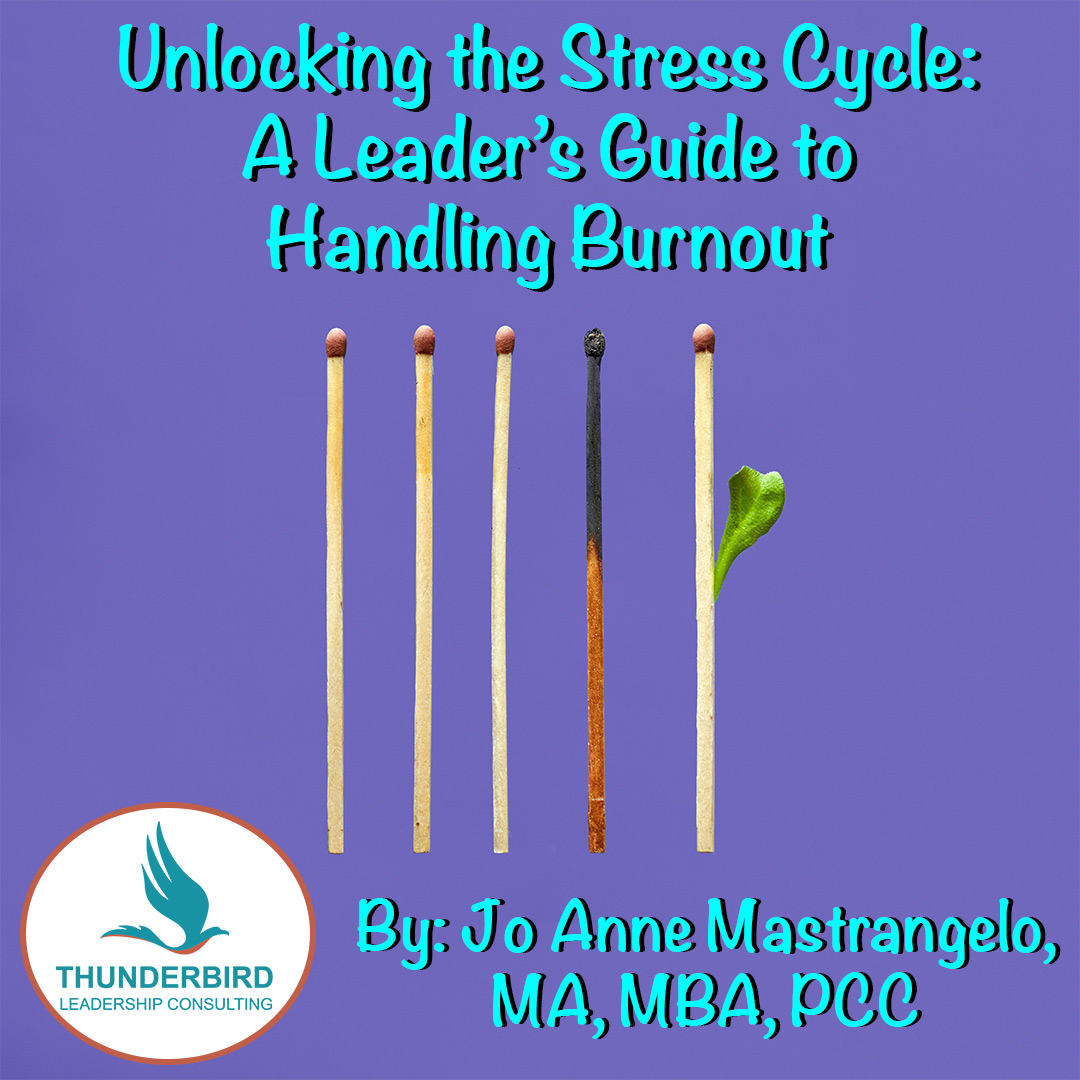Unlocking the Stress Cycle: A Leader’s Guide to Handling Burnout

By Jo Anne Mastrangelo, MA, MBA, PCC
In today’s busy world of leadership, burnout is more than just a trendy term—it’s a real physical condition that many dedicated leaders experience. Burnout goes beyond simple tiredness; it’s when you feel completely drained emotionally, disconnected from your work, and like you’re not achieving much despite your efforts.
The Science Behind Burnout
Recently, our coaching team explored insights from “Burnout: The Secret to Unlocking the Stress Cycle” by Emily and Amelia Nagoski. This exploration revealed something profound: many leaders address the stressors in their lives (the external events causing stress) without completing the body’s physiological stress cycle.
The distinction is crucial. When you receive challenging feedback, face a difficult conversation, or navigate a complex decision, your body enters a stress response. Even after addressing the situation intellectually, your body may still be carrying that stress physiologically.
As the authors note, and our own Thunderbird coaches agree, there’s no such thing as “burying the feelings.” They will live on in you. Your body will remember.
Seven Practical Approaches for Leaders to Complete the Stress Cycle
As leadership coaches, we recommend these evidence-based strategies to help you break free from incomplete stress cycles:
- Physical Activity: Even brief movement—a quick walk between meetings, a stretch break, or a weekend game of pickleball—can release physical tension built up by stress.
- Intentional Breathing: Take 90 seconds (just three deep breaths) to focus on your breathing. This simple practice can help reset your body’s chemical stress response, even during a busy day.
- Meaningful Connection: Sharing your experience with a trusted colleague, mentor, or coach for a few minutes can significantly help process stress.
- Embrace Laughter: A genuine laugh signals safety to your body and releases tension. Don’t underestimate how a moment of humor can shift your physiological state.
- Prioritize Affection: Quality time with loved ones, including pets, releases oxytocin—the “happy chemical” that counteracts stress hormones. For leaders constantly in “performance mode,” these moments of connection are vital.
- Creative Expression: Activities like writing, cooking, or other creative pursuits allow for emotional release and processing.
- Practice Mindfulness: Contrary to popular belief, mindfulness doesn’t require lengthy meditation. It can be as simple as fully experiencing a moment—the sensation of your morning coffee, the sounds in your environment, or the feeling of gratitude for a team accomplishment.
The Goal: Return to Neutral
The insight that transformed our coaching approach is understanding that after stress activation, the body needs to return to a neutral state. Many leaders operate continuously in “overdrive,” never allowing their systems to reset.
When we remain trapped in incomplete stress cycles, we’re more susceptible to burnout. By consciously completing these cycles, we can navigate leadership challenges from a place of physiological balance rather than accumulated tension.
Leadership Application
As a leader, implementing these practices isn’t just self-care—it’s strategic. When you model stress cycle completion, you create permission for your team to do the same. This cultural shift can dramatically improve team resilience, creativity, and sustainable high performance.
The next time you feel the weight of leadership stress, remember: addressing the stressor is only half the equation. Taking even small steps to complete your body’s stress cycle may be the missing element in your leadership effectiveness toolkit.
This blog post was inspired by a coaching conversation between Jo Anne Mastrangelo from the Thunderbird Leadership team and Vimla Gulabani, PCC-credentialed coach with the International Coaching Federation, exploring insights from “Burnout: The Secret to Unlocking the Stress Cycle” by Emily and Amelia Nagoski.
